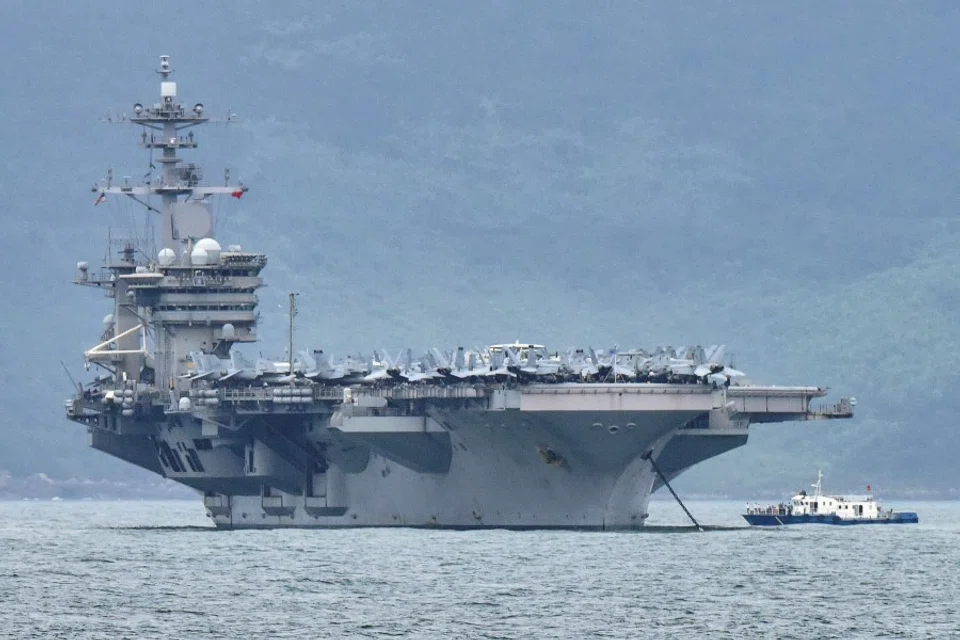Indo-Pacific: Central theatre of America's struggle against its antagonist, China
It is easy to find fault with the recently declassified version of the US's strategic framework for the Indo-Pacific. The fact remains, however, that the US is making strategic adjustments to steel itself for years, if not decades, of strategic competition with China.

In early January 2021, the US National Security Council largely declassified a 10-page document entitled the "US Strategic Framework for the Indo-Pacific'' (SFIP). Drafted in 2017, it reflects the thinking of security and foreign policy professionals in relation to China and the wider region, though its prescriptions were not always followed by President Trump.
The Biden administration appears to be following a similar strategic course on China.
A key role is assigned to Japan: the US will help strengthen Japan's military and "empower Japan to become a regionally integrated, technologically advanced pillar of the Indo-Pacific security architecture".
Key priorities
The document, which had served as the Trump Administration's overarching strategic guidance for implementing its 2017 National Security Strategy, has several significant features. It accorded high importance to alliances and partnerships, including the "quadrilateral security framework" (Quad) in which the US, Japan, Australia, and India are seen as "the principal hubs". The Biden administration's embrace of the Quad seems even more urgent. In addition, there are ongoing moves to involve Britain and other key European allies in an Indo-Pacific strategy.
A key role is assigned to Japan: the US will help strengthen Japan's military and "empower Japan to become a regionally integrated, technologically advanced pillar of the Indo-Pacific security architecture". Prime Minster Suga will soon be the first foreign leader to meet President Biden in Washington, where closer coordination is expected to be agreed on the Senkaku/Diaoyu islands and Taiwan, both sensitive issues to China.

The US is also committed to accelerating India's rise to enable it, in cooperation with like-minded countries, to act "as a counterbalance to China", including helping to develop Indian military power through the transfer of military technology.
In the western Pacific, the strategy calls for "denying China sustained air and sea dominance inside the first island chain in a conflict"; defending the first-island-chain nations including Taiwan; and "dominating all domains outside the first island chain". It also wants to enable Taiwan to develop "an effective asymmetric defence strategy and capabilities" and to draw South Korea and Japan closer to one another.
ASEAN centrality is regarded "as a core component" of the Indo-Pacific strategy but ASEAN is to be encouraged to "speak with one voice" on key issues and work closely with the US and its allies/partners to uphold the principles of the free and open Indo-Pacific. Alliances with the Philippines and Thailand are to be reinvigorated, and US relations with Indonesia, Malaysia, Singapore, and Vietnam deepened.
The US will develop a robust public diplomacy capability "which can compete with China's information campaigns [and] puncture the narrative that China's regional domination is inevitable". Intelligence cooperation with countries throughout the Indo-Pacific region will be strengthened to counter China's intelligence and influence operations. Finally, there is reiteration of the importance of the values of liberty and democracy in American foreign policy to the region.
This will involve adapting diplomatic, economic, and military strategies and weapons systems to the new task. The results are likely to be increasingly felt in the Indo-Pacific region over time.
US position vis-à-vis China: still in the works
It is easy to pick faults with the strategy. India may still disappoint: its increasingly illiberal domestic politics and autarkical economic trends could impede growth and hence its rise. South Korea and Japan may still not be able to work together because of the ghosts of history. Seoul may not be aligned with the Quad countries the way they would want, given the country's fear of antagonising China. Reinvigorating the US-Thailand alliance may be difficult, again, for the same reason as South Korea's. And parts of Southeast Asia will remain treacherous terrain for democracy and human rights.
But this would be to miss the wood for the trees.

First, Washington's fundamental change of strategic direction with regard to China is still only a few years old. It entails a multi-year process of organising and turning around the whole of government from a position of cooperation to one of competition. This will involve adapting diplomatic, economic, and military strategies and weapons systems to the new task. The results are likely to be increasingly felt in the Indo-Pacific region over time.
In this new geopolitical equation, previous doubts about US staying power may need to be re-examined.
Second, this is different from America's past security engagements in the region. The Vietnam War in the 1960s and 1970s was very much a secondary theatre of contestation between the US and the communist powers; the central theatre was Europe to which the US was absolutely committed because withdrawal would have meant a Soviet-dominated Europe and defeat in the Cold War.
Today, the Indo-Pacific, with Southeast Asia in the middle, looks like the central theatre of the struggle with America's current antagonist, China. China is seen as wanting to dominate Asia, with all its economic and strategic potential, just as the Soviet Union, and in an earlier era Germany, sought to dominate Europe, thus posing grave dangers to American economic and security interests. In this new geopolitical equation, previous doubts about US staying power may need to be re-examined.
Third, the intent to deny China sustained sea control within the first island chain means that efforts to contest China in the South China Sea, which is part of the first island chain, will continue. It also underlines the strategic importance of the maritime straits to the US, its allies, and littoral states in the South China Sea.
The US and its close allies seem to be in a haste to forge strategic coalitions of like-minded states to check perceived Chinese expansionism. Hopefully, with patience, a power balance can be attained in which China and the US can coexist and the countries of Southeast Asia can enjoy space for their independence.
This article was first published by ISEAS - Yusof Ishak Institute as a Fulcrum commentary.
Related: India in the Indo-Pacific: Reining in China in the new theatre of great power rivalry | South Korea and America's Indo-Pacific strategy: Yes, but not quite | Targeting China, Japan's Indo-Pacific strategy in Southeast Asia runs into headwinds? | The US gets it wrong again | Maldives: Even a tiny state in the Indo Pacific has a big role in China-US competition | Germany's Indo-Pacific vision: Building a multilateral world order with ASEAN



![[Photos] Fact versus fiction: The portrayal of WWII anti-Japanese martyrs in Taiwan](https://cassette.sphdigital.com.sg/image/thinkchina/3494f8bd481870f7c65b881fd21a3fd733f573f23232376e39c532a2c7593cbc)

